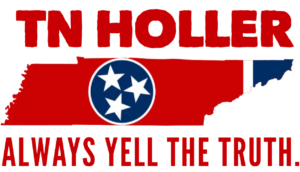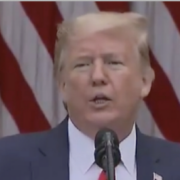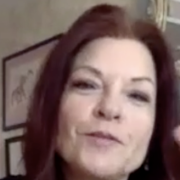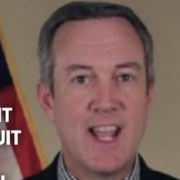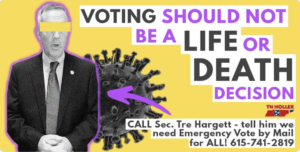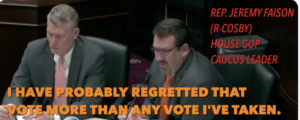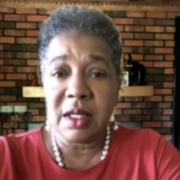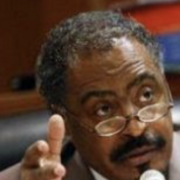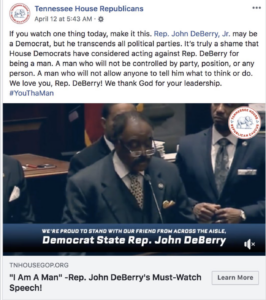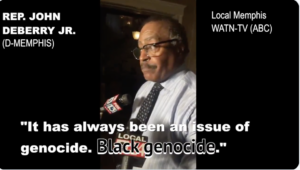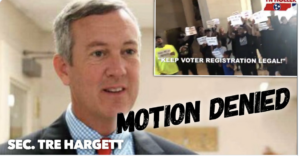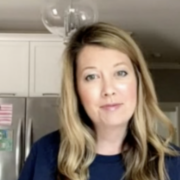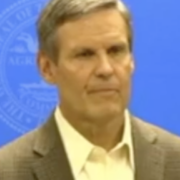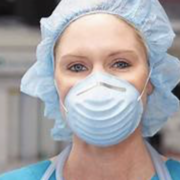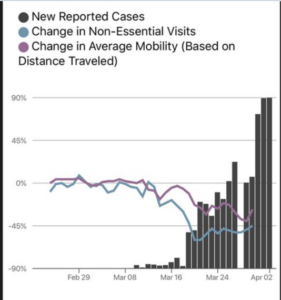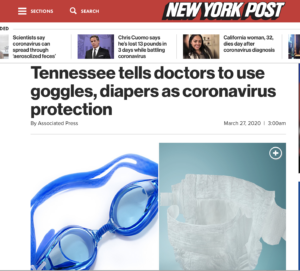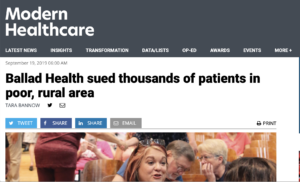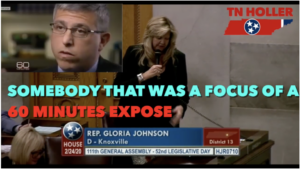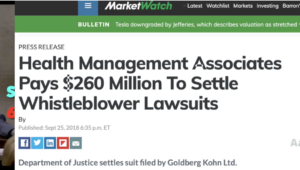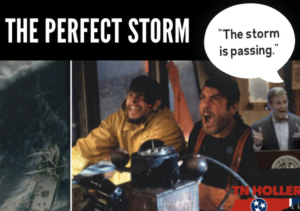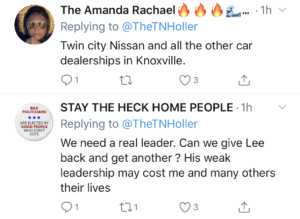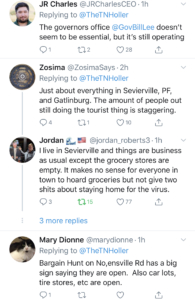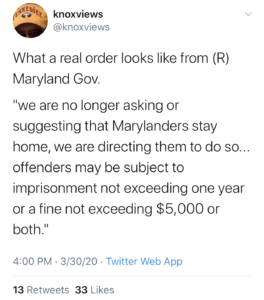TODAY’S HOLLER: “OBAMAGATE” EXPOSED, Memphis Election Commission Shenanigans
LIKE WHAT WE’RE DOING?
FORWARD THIS TO YOUR FRIENDS & FAMILY AND TELL
THEM TO “FOLLER THE HOLLER” AND SUBSCRIBE!
(And chip in HERE to help us grow!)
TODAY’S HOLLER:
“OBAMAGATE” EXPOSED: At his press conference yesterday a REPORTER asked Trump: “You appeared to accuse Obama of a crime yesterday. What did he do?”
TRUMP’s response: “You know what the crime is. The crime is very obvious to everybody.”
TRANSLATION: “OBAMAGATE”, currently trending because of right wing desperation, is bullshit. ?
They want us to believe Obama is going to prison, but it’s Trump’s capos who are in prison, convicted, or having their charges dropped because of pure corruption. Non-Facebook Link

–MEMPHIS ELECTION COMMISSION QUESTIONS: The MEMPHIS Election Commission needs to be watched. Election administrator Linda Phillips has conflicts of interest with their voter registration software company, including her sons working there. This is in addition to their lawyer sharing office space with the lobbyist for the touch screen voting machine company they just awarded another contract to, even though touch screens take 3x longer, and they recently *miscounted* black votes. Voter suppression in minority-heavy areas continues.

OBAMA RIPS TRUMP’S RESPONSE: OBAMA calls Trump’s Pandemic Response “a CHAOTIC DISASTER”, adding “when that mindset of what’s in it for me and to heck with everybody else is operationalized inside our government.” Boy is he right. And boy do we miss him. Non-Facebook Link

–A CONTACT TRACING SHORTAGE is being reported in TN, where we have just 25% of the recommended amount of contact tracers – 1,500 people short for the critical disease mitigation effort. Rep. Mike Stewart is right… with so many unemployed, this is a win-win way to put folks to work.

-A BULLSEYE ? target was placed at NASHVILLE NAACP President Keith Caldwell’s house. He says the responding officer “shrugged” & said the target was “pretty cool.” Unacceptable… Racists sure are feeling emboldened lately.

-An unreleased White House report has VIRUS RATES SPIKING IN THE HEARTLAND — “10 top areas recorded surges of 72.4% or greater over 7-day period… They include Des Moines, Iowa; Amarillo, Texas and Central City, Kentucky… and NASHVILLE, TN.”

-Yesterday TRUMP had the nerve to say “We have met the moment, and we have prevailed.”Most cases in the world. Most deaths in the world. 80,000+ dead Americans and their loved ones would likely disagree. ??
-SEARING new Biden ad?: “We have an economic crisis because we have a public health crisis… and we have a public health crisis because Trump refused to act…Trump didn’t build a great economy. His failure to lead destroyed one.” ??Non-Facebook Link

-And here’s another ad where Biden sets the record straight. ??Obama-Biden built a response pandemic apparatus. Trump tore it apart. HE WILL NOT REWRITE HISTORY. Non-Facebook Link
-WASH POST EDITORIAL BOARD: “WHISTLEBLOWER paints shocking picture of White House Bungling COVID Response”
–BROOKINGS: “As states reopen, COVID-19 is spreading into even more Trump counties”

-This is Katie Miller, Pence’s press secretary, who just tested positive for COVID-19, at the healthcare facility where Pence just *heroically* delivered masks. The ONLY ONE not wearing a mask. ??

-We took the liberty of fixing this for Trump:

-UC BERKELEY STUDY: a simple solution to help us emerge from this nightmarish lockdown? ALWAYS social distance in public and, most importantly, wear a mask… There is no excuse not to mask up at this point. It’s not brave, it’s selfish. ?

-It didn’t have to be this way.

-4 Americans Died At BENGHAZI — Hillary faced hours upon hours of interrogation. 80,000 Americans are dead. Worst outbreak on ? — yet Trump won’t let the task force answer questions? What is he hiding? ?? ?? SHARE THIS

-RESIGN, BARR: “Nearly 2000 former Justice Department officials have signed onto a letter calling for Attorney General William Barr to resign over his improper intervention in the criminal case of former Trump national security adviser Michael Flynn.”

–CARTOON OF THE DAY: Obama’s Crime, revealed! #Obamagate

-Tennessee says absentee ballots are now available “for those eligible”, but this isn’t good enough. We should all be “eligible” to not have to risk our lives to vote. Holler at Hargett: 615-741-2819 

-California will send ALL voters mail-in ballots for the November election. THIS is what states that actually want people to vote and believe in democracy do during a deadly pandemic. We’re at the bottom in voter turnout by design. Voter suppression is real. ???
 -Suddenly Marsha and the Republicans pretend to care about the debt again, right as folks need help and they know a Dem may be in charge soon? REMINDER: Blackburn voted to blow a $2 TRILLION HOLE in the deficit to hand a tax cut to corporations and the wealthy even before the virus. Spare us. ?
-Suddenly Marsha and the Republicans pretend to care about the debt again, right as folks need help and they know a Dem may be in charge soon? REMINDER: Blackburn voted to blow a $2 TRILLION HOLE in the deficit to hand a tax cut to corporations and the wealthy even before the virus. Spare us. ?

-Chris Hayes said it best…

-HOLLER GRAPHIC OF THE DAY: Tennessee is #1 in MEDICAL BANKRUPTCIES… #1 in RURAL HOSPITAL CLOSURES per capita… We lose $1 BILLION EVERY YEAR we don’t EXPAND MEDICAID… Not expanding Medicaid is POLICY MURDER.

-Senator Lamar Alexander called the DOJ’s anti-Obamacare lawsuit that would rip coverage from millions “REALLY FLIMSY” ??
-The President of the United States shared a video which concluded there had been a “silent coup” attempted against him. This guy is reckless and dangerous in so many different ways.

-Cool news—TODAY at 11AM CST we’ll have Congressman Steve Cohen LIVE! Join on Twitter & Facebook. (Follow/Like our page to get reminded when we go live)

Don’t forget to FOLLER the new MEMPHIS HOLLER and the KNOXVILLE HOLLER if you’re in those areas! And please consider CHIPPING IN MONTHLY to help us keep GROWING THROUGHOUT THE STATE… make it $10 and we’ll send you a holler hat!
We hope you all had a beautiful Mother’s Day.

(note your address on PayPal and which color you want when you chip in)
